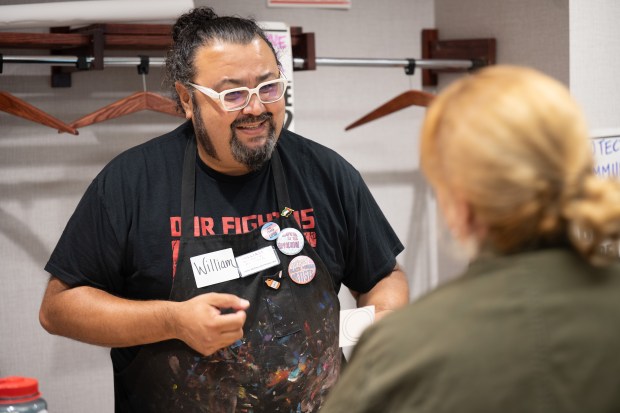As a potential Northwest Indiana carbon sequestration project looms, area residents plan to continue fighting — even if they have to do it alone.
Just Transition Northwest Indiana on Tuesday hosted a community conversation about the carbon dioxide project that will require a pipeline to run through hundreds of miles in six counties statewide. In September, BP said the project could keep millions of tons of carbon out of the atmosphere, according to Post-Tribune archives.
Just Transition Northwest Indiana’s event, held at the Hammond Public Library, highlighted residents’ concerns and explained the dangers of the project.
“We know where this is headed,” said Susan Thomas, legislative and policy director for the local environmental justice organization. “We are not a science experiment. We are a community that deserves to thrive.”
Through the project, BP plans to capture carbon dioxide emitted by industrial sites, turning it into a liquid and storing it underground through a pipeline. The company hopes the project will prevent carbon from entering the atmosphere and contributing to man-made climate change.
Last year, BP’s project manager Ed Shahady told the Post-Tribune that the company is targeting 40 million tons of carbon emitted annually by industrial sites in Northwest Indiana.
“I don’t think we’ll get all of it,” he said in 2023. “It would be great if we could from the decarbonization standpoint but I think it would be hard for some industries to put in the proper equipment to actually get that capture to be a reality.”
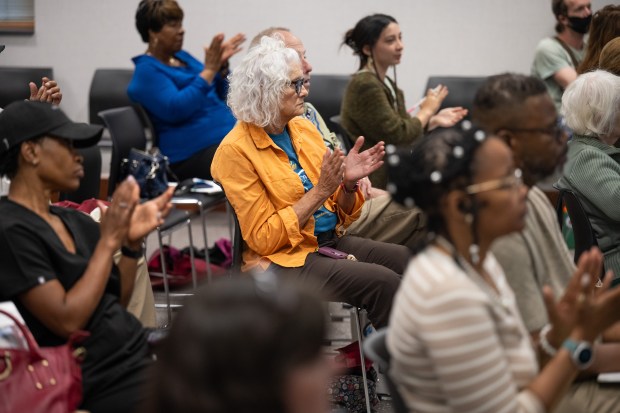
The pipeline, also called Project Crossroads, is expected to cost more than $138 million, with the U.S. Department of Energy funding nearly $100 million, according to the department’s website.
Project Crossroads is part of the Midwest Alliance for Clean Hydrogen (MachH2) Hub, which could receive up to $1 billion in funding and will service Indiana, Illinois and Michigan, according to Just Transition Northwest Indiana’s website.
MachH2 will use carbon capture and storage to create “blue hydrogen,” which is made from methane, said Lauren Piette, senior associate attorney for Earthjustice’s clean energy program. Hydrogen is promoted as a potential replacement for fossil fuels because it doesn’t emit carbon dioxide when burned, but it releases other emissions, she added.
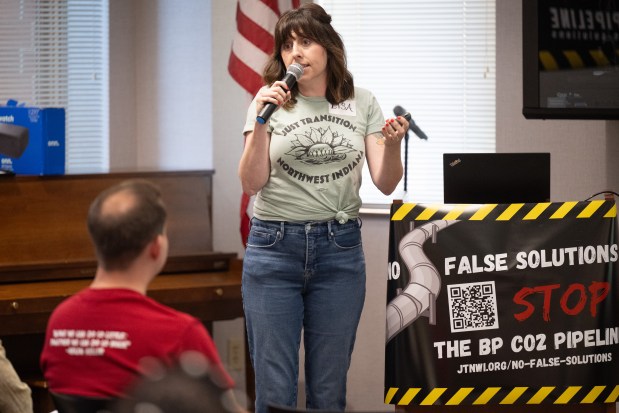
“If you ever hear someone describe hydrogen as clean burning, that is wrong,” Piette said. “Hydrogen is a gas, so it should come as no surprise that oil and gas companies are really behind this … It allows them to keep their fossil fuel infrastructure and keep earning profits, but they get to call it clean.”
Carbon capture and storage projects are rare nationally, said Ben Inskeep, program director of Citizens Action Coalition, a statewide consumer and environmental advocacy organization. Although no projects currently exist in Indiana, nine are being developed across various industries.
“It’s not just BP up here in the region,” Inskeep said. “There’s other industries, not just refineries like here or companies trying to make hydrogen. We’re talking about steel plants. We’re talking about ethanol refineries or ethanol production facilities.”
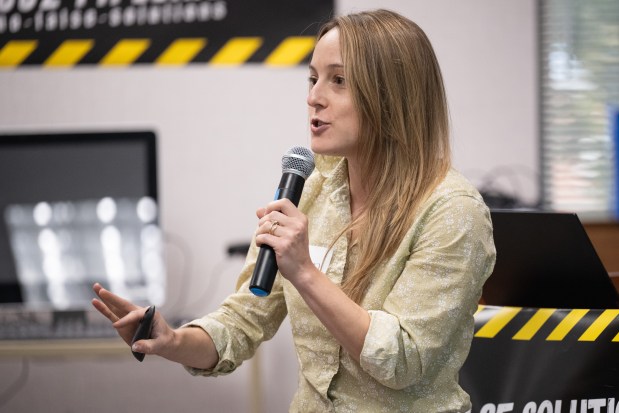
In April, U.S. Steel and a Texas-based CarbonFree Chemical Holdings announced a project to cut up to 50,000 tons a year of carbon dioxide by turning emissions from the Gary Works plant into calcium carbonate. A 50,000-ton reduction in carbon dioxide emissions with SkyCycle would be about one-half of 1% of the U.S. Steel’s 2022 emissions total of 10 million tons, according to U.S. Environmental Protection Agency data
Roberto Reyna Jr., a Whiting resident, said he’s concerned about the region’s air, adding that it’s caused health problems for many of his friends and family. He believes the pipeline is going to continue causing health problems.
“I love Whiting,” Reyna said. “But I hate living here now.”
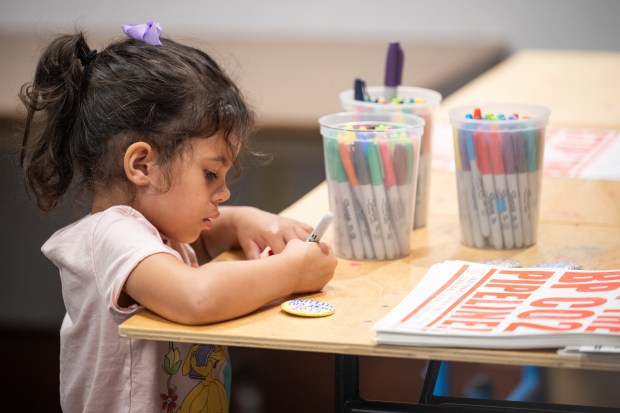
Reyna encouraged everyone to raise awareness about the project, saying nothing will change if people don’t know what the effects will be.
Olga Bautista, co-executive director of the Southeast Environmental Task Force, attended the meeting and said it’s demoralizing to watch corporations like BP impact the area.
Industrial work has negatively affected her family and friends for years, Bautista said, and she believes the pipeline will add to community health problems.
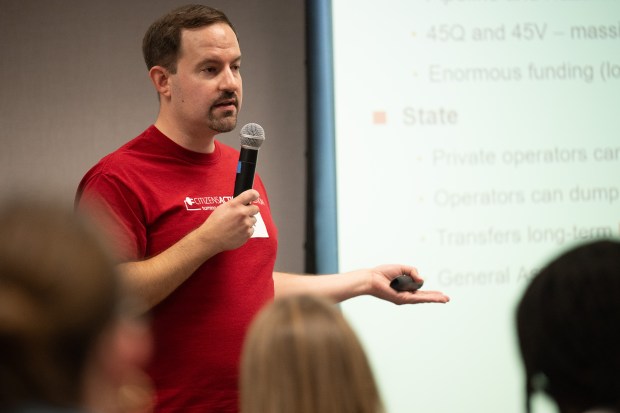
Bautista is hopeful that having community meetings will help change the project’s future.
“I think it’s really important for all of us to put eyes on the disaster and what people are living through and experiencing,” she said. “We have to do what we need to do for our community.”
Post-Tribune archives contributed.



